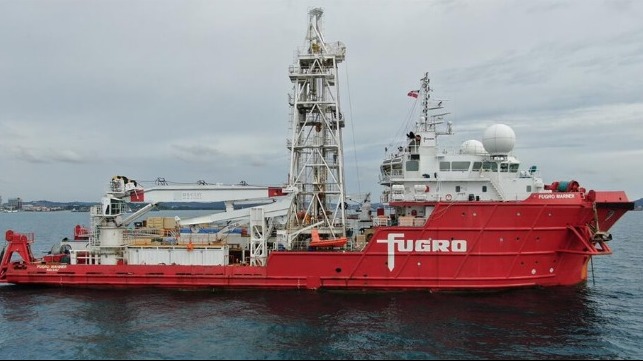First Seabed Survey Launched for Australia’s Offshore Wind Development

The seabed survey for Australia’s first offshore wind farm commenced today, April 28, in the waters off Victoria and is expected to last about five weeks. Government officials and the developer for the project, Star of the South, hailed it as a key step in the process with has been on the drawing boards for years while Australia worked to develop enabling legislation and define the industry. Proposed in 2019, and supported with investment and backing from Copenhagen Infrastructure Partners (CIP), the project is considered to be the most advanced in planning.
The contract for an offshore geotechnical site investigation was awarded to geo-data specialist Fugro. The company has been preparing to launch the survey work and today it was reported that the effort was officially beginning. The proposed area for the Star of the South wind farm lies beyond the three nautical mile boundary off the southern Wellington coast of Gippsland in the state of Victoria.
The project will be surveying an area comprising approximately 123,000 acres lying between 4 and 15 miles off the coast. The proposal calls for the placement of between 150 and 200 fixed-bottom towers that would stand approximately 1,150 feet. The feasibility study is proceeding with the concept calling for the potential to generate up to 2.2 GW of energy. The project has the potential to supply around 20 percent of Victoria’s energy needs, creating 2,000 new jobs, and powering around 1.2 million homes.
Star of the South Chief Executive Officer, Charles Rattray, said the seabed studies follow four years of engineering and environmental investigations on the project.
Fugro Australia is managing the investigations for Star of the South, using its specialist geotechnical drill vessel the Fugro Mariner. Built in 2007 and converted and extensively upgraded in 2018, the 3,500 gross ton vessel can deploy the full suite of Fugro specialist in-situ sampling and testing systems. It has accommodations for up to 58 passengers.
“These investigations will collect critical data to drive progress on the project and bring us another step closer to bringing offshore wind energy into the grid this decade,” said Rattray. “Knowing what’s under the seabed in this specific location helps ensure everything we do – from turbine design and placement through to construction methods – is tailored especially for this spot in Bass Strait.”
The investigations will collect samples from 22 locations over five weeks from within the project’s 2019 Exploration License area. They will be collecting soil and rock samples from below the seafloor which is at a depth of up to approximately 230 feet.
The project is in the feasibility phase with the environmental assessments currently underway to inform the project planning and approvals. If Star of the South is approved and proceeds to construction, work could start around the middle of this decade with first power before the end of the decade to align with the planned closure of Latrobe Valley coal power plants.
Australia declared the first wind zone in December 2022 encompassing the region where Star of the South is proposed. The government declared a second wind region in February 2023 centered on an industrial region along the central, eastern coast in New South Wales known as the Hunter and located near Newcastle. A further four regions have also been earmarked for offshore wind zones. These include the Pacific Ocean region off the Illawarra in NSW, the Southern Ocean region off Portland in Victoria, the Bass Strait region off Northern Tasmania, and the Indian Ocean region off Perth/Bunbury.
